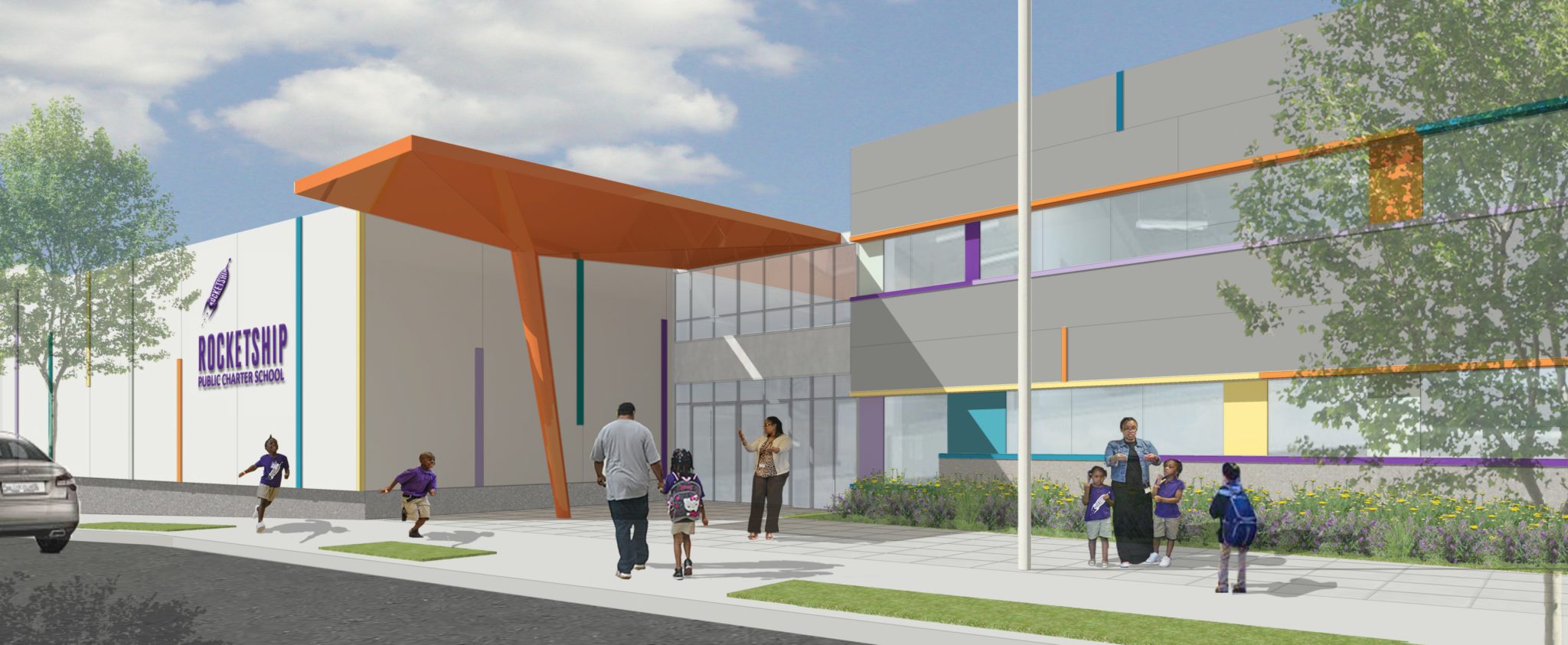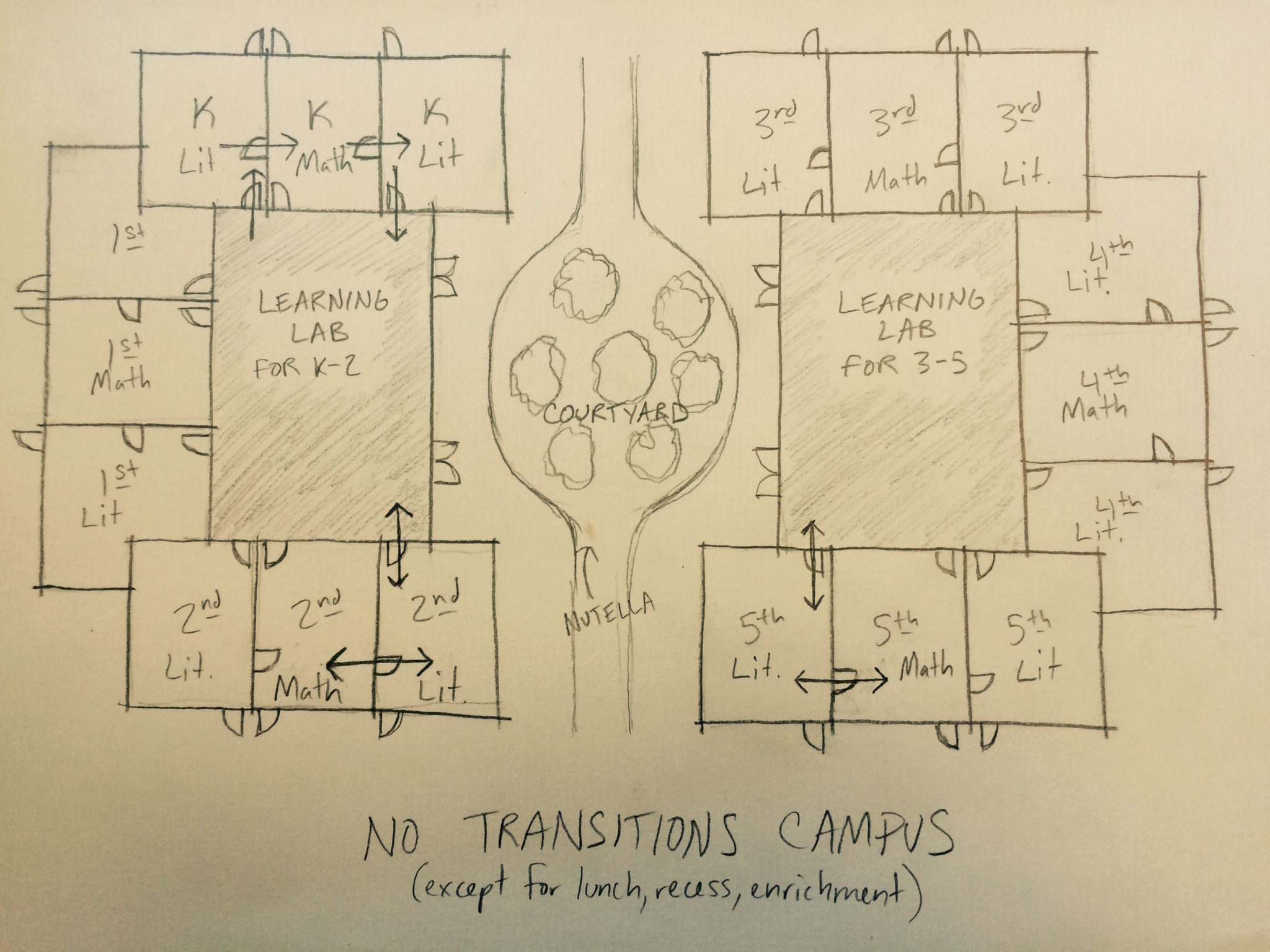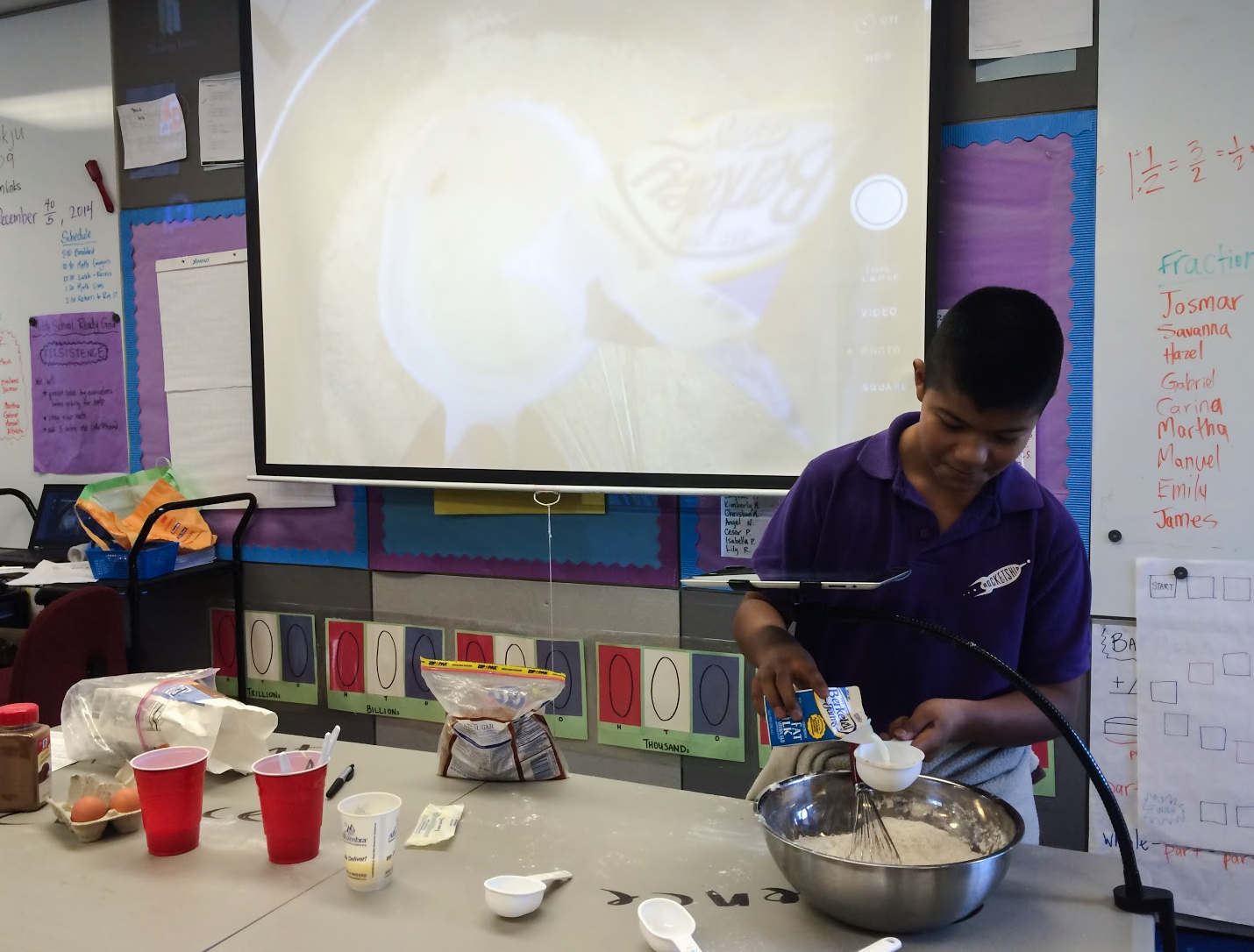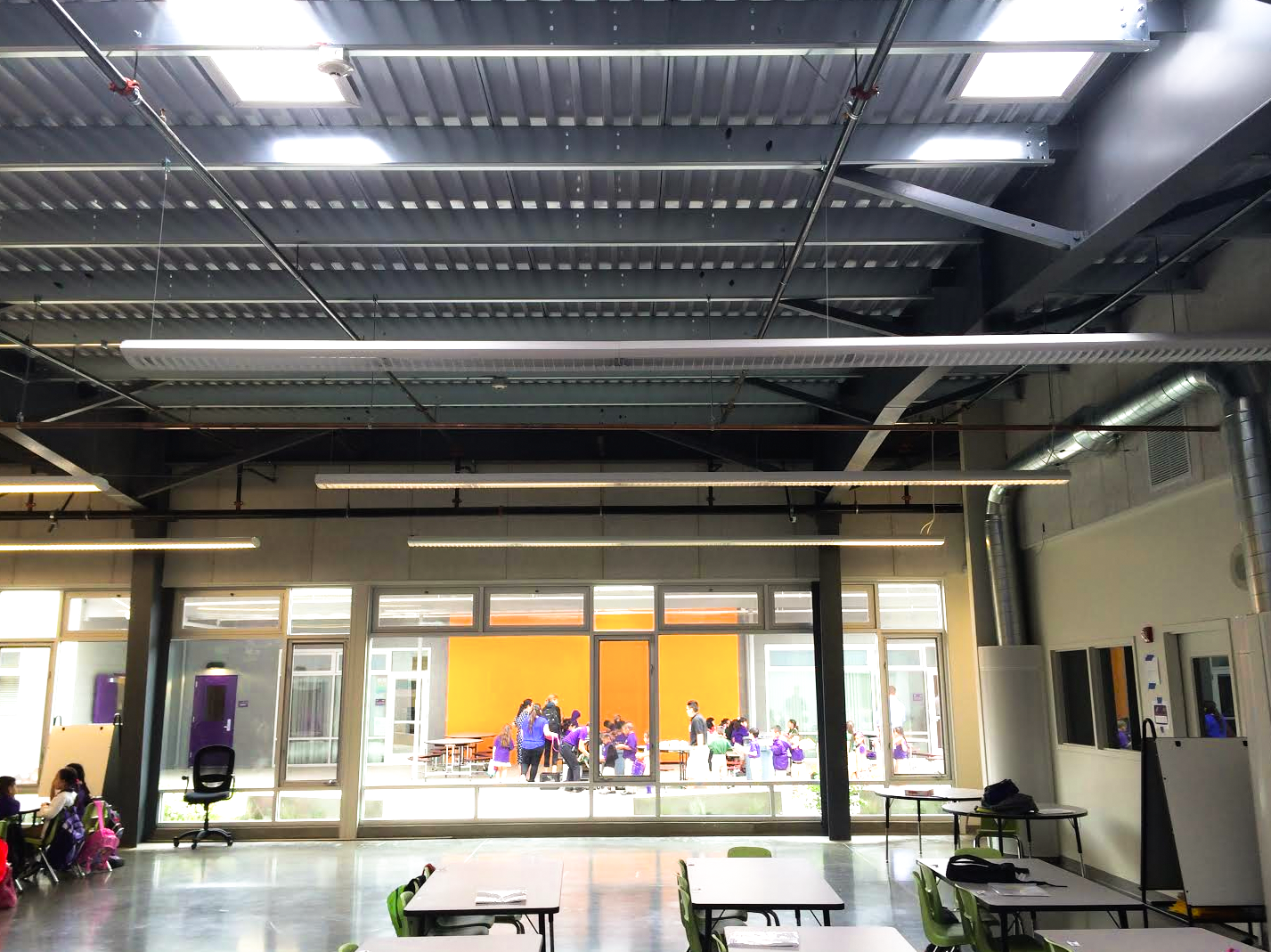
Building Schools for Success
Harrison Tucker, Associate Director, Real Estate Development
It’s like a Dan Brown novel.
Here’s the plot: some elusive, nefarious villain – let’s call it the Achievement Gap League – has cleverly distributed the key to the world’s most pressing puzzle – Kids’ Success – among disparate parties, each party unaware the other is in possession of this sweet knowledge. To break the code, and stop the Achievement Gap League, all parties have to find each other, to share their nuggets of knowledge and arrange them in the right way. Here’s the catch, the Dan Brown twist: you don’t know if you’ve broken the code until years later.
This, in short, is facilities innovation at Rocketship. Or rather, it’s the closest metaphor I can conjure to explain the challenge and thrill of iterating on Rocketship’s built environment. Allow me a few paragraphs of your time to explain.
Rocketship’s Real Estate team is in regular communication with a host of knowledge-nugget keepers. In fact, you may be one yourself: principals, teachers, architects, contractors, operations & maintenance personnel, financiers and building department staffers.
Let’s take an innovation: It. Principals know how to structure It on a school level, teachers know It on the classroom scale, the architects know how to draw It, the contractor knows how to build It, the financier knows whether It holds value, operations knows how to maintain It, building department knows if It meets code. As the Jack of All Trades (and, yes, Master of None…), the Rocketship Facilities team translates this pastiche of expertise into the built environment, the space our students and teachers inhabit every day. Remove any one player and the code isn’t broken, the innovation unsuccessful. (If It boosts student achievement in the short term, but is a long-term maintenance drain on the school, we haven’t solved a problem at all.)
As we wade into the design for future campuses, we’ve gathered the year’s best ideas, the ones striking fear in the heart of the Achievement Gap League:
No Transitions Campus
 Get excited. Less bubbles in mouths, less feet on hallway lines, less hands behind backs, more instructional minutes. Inherent in Rocketship’s rotational model, transitions aren’t completely erasable (OK, it’s a Less Transitions Campus), but we’ve devised a floor plan to eliminate transitions between academic programming. Classes would flow from Learning Lab to Math to Literacy, or any combination thereof, without ever entering a hallway. The floor plan features two learning labs, one for grades K-2, another for grades 3-5. Classrooms connect directly to one of the learning labs and have a separate exit to an exterior hallway to minimize disturbing the learning lab when transitioning to lunch or recess. Grouped in threes by grade level (Literacy | Math | Literacy), doors also connect same-grade-level classrooms.
Get excited. Less bubbles in mouths, less feet on hallway lines, less hands behind backs, more instructional minutes. Inherent in Rocketship’s rotational model, transitions aren’t completely erasable (OK, it’s a Less Transitions Campus), but we’ve devised a floor plan to eliminate transitions between academic programming. Classes would flow from Learning Lab to Math to Literacy, or any combination thereof, without ever entering a hallway. The floor plan features two learning labs, one for grades K-2, another for grades 3-5. Classrooms connect directly to one of the learning labs and have a separate exit to an exterior hallway to minimize disturbing the learning lab when transitioning to lunch or recess. Grouped in threes by grade level (Literacy | Math | Literacy), doors also connect same-grade-level classrooms.
Imagine this: Teacher opens their classroom door to a smiling ILS. Teacher and ILS share a brief exchange about Jorge’s rough day, prepping the ILS for how to manage behavior that block. Kids walk through the door, crossing the threshold from classroom to Learning Lab in one step. The Teacher never leaves the classroom. The ILS never leaves the Learning Lab. Best of all, transition minutes become instructional minutes. Fifteen minutes of reduced transition time per day for 180 days = 5.6 days of instruction over the course of the year.
The Classroom Project
Zoom-in one level, from campus to classroom. This year, our team focused intently on 1) providing teachers more versatile classroom tools and 2) improving the quality of classroom space.
iPads as Doc Cams
 In the fall, working with Sí Se Puede Academy teachers Stephen Pham and Sheena Shirakhon along with Rocketship’s Director of Technology Solutions Mike Teng, we began piloting tablets as a substitute for doc-cams. A month and a half ago, after settling on iPads as the tablet winner, we scaled the iPad-as-doc-cam trial to all RSSP teachers. As Pham noted in Three Ways to Leverage Tech in Your Classroom, iPads’ native camera function mirrors anything underneath it to the class through AirServer or AppleTV. Teachers at our second Nashville School will have the option to mirror their iPads to either TVs or projectors. IPads are doc-cams, but with mobility, allowing teachers to roam the class, manage behavior, and display student work (or measurement skills, pictured to the left) instantaneously. Teaching apps also abound – PDF annotators and remote whiteboards to name a few – and there’s even discussion of digital curriculum.
In the fall, working with Sí Se Puede Academy teachers Stephen Pham and Sheena Shirakhon along with Rocketship’s Director of Technology Solutions Mike Teng, we began piloting tablets as a substitute for doc-cams. A month and a half ago, after settling on iPads as the tablet winner, we scaled the iPad-as-doc-cam trial to all RSSP teachers. As Pham noted in Three Ways to Leverage Tech in Your Classroom, iPads’ native camera function mirrors anything underneath it to the class through AirServer or AppleTV. Teachers at our second Nashville School will have the option to mirror their iPads to either TVs or projectors. IPads are doc-cams, but with mobility, allowing teachers to roam the class, manage behavior, and display student work (or measurement skills, pictured to the left) instantaneously. Teaching apps also abound – PDF annotators and remote whiteboards to name a few – and there’s even discussion of digital curriculum.
New Teaching Wall(s)
In conjunction with iPads, 55” TVs in new school classrooms make for large timers, music speakers, worksheet-displayers and, of course, video-players. On swivel mounts, these TVs are part of the new toolkit for teachers. Additionally, to give teachers maximum useful wall space, new-school classrooms feature four whiteboards installed from the floor up to six feet (encouraging student participation at kid height) and on two different walls (making break out and tutoring groups easier).
Quality of Space
 So now you’re envisioning this new Rocketship classroom in your mind….teacher roaming with an iPad, worksheet displayed on the TV, kids sitting on the rug writing on the whiteboard. Look up: imagine a blush of sun from a skylight, high ceilings, the ductwork exposed. Look side-to-side: acoustic panels muffle noise, large windows let in more daylight, and an orange accent wall keeps the crowd awake. Look down: the floor is a naturally-colored polished concrete.
So now you’re envisioning this new Rocketship classroom in your mind….teacher roaming with an iPad, worksheet displayed on the TV, kids sitting on the rug writing on the whiteboard. Look up: imagine a blush of sun from a skylight, high ceilings, the ductwork exposed. Look side-to-side: acoustic panels muffle noise, large windows let in more daylight, and an orange accent wall keeps the crowd awake. Look down: the floor is a naturally-colored polished concrete.
We want our classrooms to be places our teachers want to be, where our kids are engaged and focused. Our kids, families and staff deserve the world. But per pupil state funding isn’t exactly the world.
Operating within our limited budgets and persistent political winds, changes must be simple, inexpensive and high-leverage. And simplicity can look good. Like Rocketship’s infamous purple shirts and khaki shorts, we don’t need outlandishness, but we do need to tuck-in our shirts. In repeating the mantra ‘We dress for success’ we are saying presentation matters. And on the facilities team, we build for success.
Of course, we won’t know until years from now, when teachers have settled into classrooms, when kids have sat down to learn, whether our innovations were good ones; the Dan Brown cliff-hanger reveals itself more slowly in real-world work. But if we don’t bring together the code-breakers of the education and facilities world, if we don’t innovate, if every year our campuses and classrooms are not better than the year before, we may never bring down the Achievement Gap League. And nobody wants that.
Share other examples of great schools built for success → @RocketshipEd
Originally from Charlotte, North Carolina, Harrison ventured to California and joined Rocketship in 2011 after stints in Chicago and Honduras. In Honduras, he served as a Business Advisor in the Peace Corps, working with a Honduran-owned lumber company and building fuel efficient stoves for two years.
In his current role, Harrison manages the design and construction of Rocketship’s new campuses around the country and is grateful for the opportunity his work provides to build community assets, push the bounds of sustainability and create homes for the incredible learning happening every day with our Rocketeers. In particular, Harrison is inspired by his mentee, Jorge, of three years; some days it is unclear exactly who is mentoring whom. Harrison currently lives in San Francisco.
Published on May 4, 2015
Read more stories about: Education Reform, Most Popular Stories.


